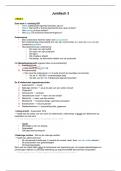Essay
Unit 6 Assignment 6A
- Kurs
- Hochschule
- Book
This is a distinction standard work of a unit 6 assignment, marked by an excellent tutor and written with great depth and passion. This assignment Is based on the first learning aim (A) and is about how different colours of light affect plant growth. This assignment was chosen based on what I was a...
[ Mehr anzeigen ]






